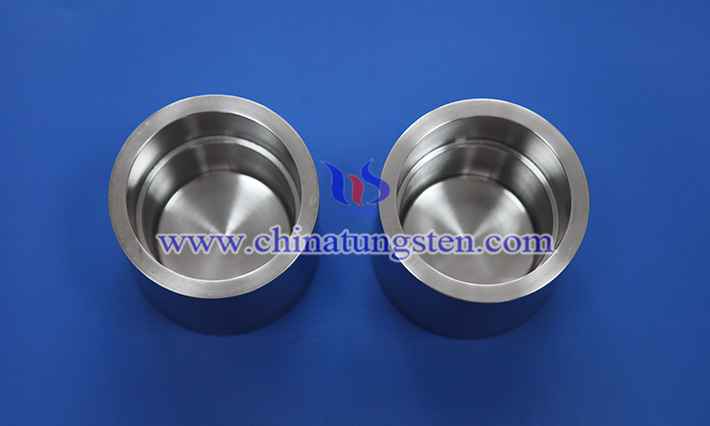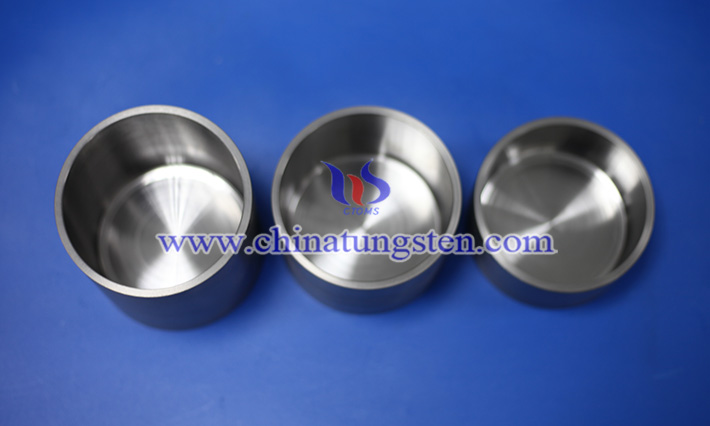What Is the Performance of Tungsten Crucibles in High-Temperature Oxidation Environment?
- Details
- Category: Tungsten Information
- Published on Monday, 30 June 2025 11:25
Tungsten crucibles are widely used in crystal growth, metal smelting and vacuum evaporation processes. However, in the high-temperature oxidation environment, its performance has certain particularities and limitations, which has become an important issue that must be paid attention to in its practical application.
In air or oxygenated atmosphere, when the temperature exceeds 400°C, the tungsten surface begins to oxidize to form tungsten trioxide (WO₃). As the temperature rises further, this oxide gradually forms a brittle oxide film on the surface of tungsten. Although the oxide film plays a protective role in some materials, WO₃ is highly volatile at high temperatures and will gradually evaporate off the crucible surface over time, resulting in the continuous depletion of the crucible surface. Prolonged exposure to high-temperature oxidation causes the wall thickness of the W crucible to gradually thin and its mechanical strength to decrease, ultimately affecting its structural integrity and service life.

In addition, during the high-temperature oxidation process, the oxide film on the surface of tungsten is usually loose and discontinuous, and cannot form an effective protective layer to prevent further diffusion of oxygen. Therefore, the crucible exhibits weak oxidation resistance in an oxidizing atmosphere, which is also a disadvantage of tungsten compared with some oxidation-resistant ceramics or molybdenum alloys.
The effect of high-temperature oxidation on the crucible is not only reflected in the degradation of the physical structure, but also may cause the problem of uneven thermal expansion. There is a difference in the thermal expansion coefficient between the oxide film and the base tungsten metal, and the stress accumulation during the thermal cycling process can easily cause the spalling or crack formation of the oxide layer on the surface, which further aggravates the oxidative erosion and material damage.
In order to improve the performance of tungsten crucibles in high-temperature environments, various measures have been taken in the industry. First of all, by using high-purity tungsten materials to reduce the presence of impurities, it helps to improve the compactness and uniformity of the overall material, thereby slowing down the oxidation reaction. Secondly, surface protection technology, such as coating the surface of the crucible with a layer of inert metal (such as molybdenum) or ceramic coating (such as silicon nitride, aluminum nitride, etc.), forms a barrier against oxygen intrusion, and effectively prolongs the service life of the crucible. In addition, process operations often require high-temperature treatment in an inert atmosphere or vacuum to avoid direct exposure of the crucible to oxygen.

In recent years, researchers are also exploring the enhancement of oxidation resistance through tungsten alloy modification and nanostructure design. For example, adding a small amount of hafnium, tantalum and other elements can promote the densification and stability of the oxide film, slow down the oxidation rate, and improve the adaptability of the W crucible in the high-temperature oxidation environment.
- Chinatungsten Online: www.chinatungsten.com
- CTIA GROUP LTD: en.ctia.group
- Tungsten News & Price: www.ctia.com.cn
- Molybdenum News & Price: news.molybdenum.com.cn
- Tel.: 86 592 5129696; Email: sales@chinatungsten.com